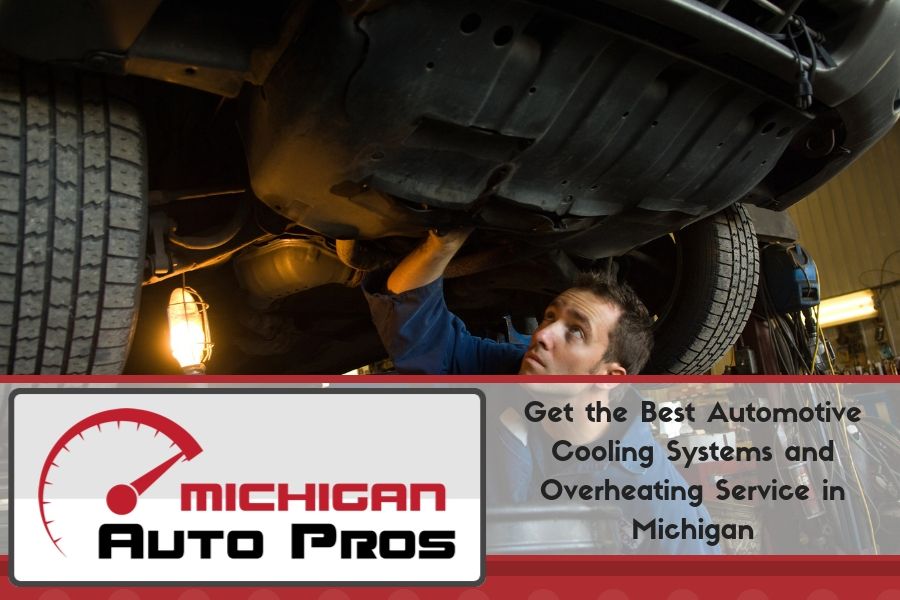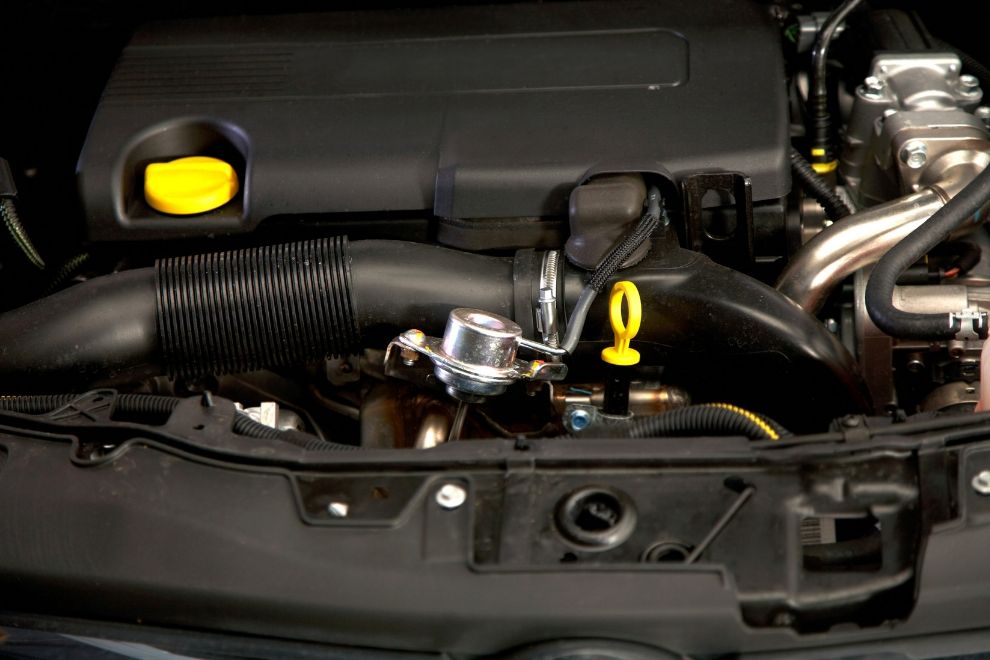Nearly all cars on the road today use a sophisticated liquid cooling system to keep temperatures in check, even during the dog days of summer. Thanks to technological advancements, vehicle cooling systems are incredibly robust and rarely fail. However, that doesn’t mean vehicles cannot overheat. When they do, catastrophic damage becomes a very real concern. If you keep up with routine maintenance, the chances of an overheating vehicle are slim. However, if like many you choose to let seemingly insignificant points of maintenance fall behind, the likelihood of being left curbside thanks to an overheated engine becomes more probable. Let’s look at a few cooling system basics and some causes of overheating to help you better understand how and why cars an overheat.
Get the Best Automotive Cooling Systems and Overheating Service in Michigan
The Fundamentals
In essence, a car uses coolant (often called antifreeze) to absorb heat from the engine before routing it through a radiator which, through its large surface area, allows heat to dissipate with the help of incoming air as the car travels. If you were to cut your engine in half, you would see a network of channels and ports through which coolant flows. Your vehicle’s water pump is responsible for keeping coolant moving through the motor, plumbing, and ultimately the radiator where it is cooled before returning to the engine. A large fan is often affixed to the front of the radiator, and you may hear it turn on and off while you inch through traffic or sit idle at a red light. The fan exists to keep air passing over the radiator when the car is not moving and is a common point of failure when diagnosing an overheating car.
It’s worth mentioning that not all cars use liquid cooling. A few older or vintage vehicles may use air cooling. Air cooling is much more common on motorcycles and uses a series of fins on the engine to help increase surface area to exchange heat with the atmosphere via passive airflow. Chances are, if you currently drive an air-cooled car, you’ve at least a modicum of automotive savvy and likely understand the limitations of the air-cooling system.
When to Pull Over
If your dashboard indicates your engine is reaching critical temperature levels, or you notice smoke coming from under the hood, you should pull over as quickly as safely possible. The likelihood of your car bursting into flames is quite slim but continuing to travel with an overheated engine will only increase the probability of massive repair bills.
The Heater Trick
If you’re crawling through traffic and notice engine temperatures slowly rising beyond normal, turning on your heater may bring them down. The heat use to keep you warm on cold days is simply hot coolant heated by the engine and re-routed through a heater core (essentially a mini radiator) which is then blown into the cabin. Although it’s uncomfortable on a hot day, rolling down your windows and cranking the heat helps the cooling system shed heat and can lower engine temperatures fast.

Checking Your Fan
If at slow speeds you notice your vehicle beginning to overheat rapidly, it’s easy to inspect the fan to ensure it hasn’t failed or doesn’t have any road debris preventing it from spinning. Gently touch the hood of the car to make sure you won’t get burned before opening it to inspect. For obvious reasons, be sure the car is off, and no parts are spinning before inserting your hands into the engine bay. The fan sits at the front on the radiator, just behind the bumper. Verify that no debris have jammed the fan, and if possible, spin the fan by hand. It should feel smooth and unimpeded. If all seems well, turn the car back on and watch to see if the fan turns on. It should only take a few moments, and if it doesn’t, it’s best to call for roadside assistance and have your car serviced as soon as possible.
Add Coolant
Sometimes pulling over and sitting for 20 minutes is all that’s needed to rebalance your engine temperatures. After sufficient cool-down time, it’s possible to add more coolant to the car. It’s critical that the engine cools before opening the radiator, to avoid serious burns from super-heated steam.
Wearing heavy gloves, place a towel over the radiator cap and press down as you turn slowly to release pressure. Once released, remove the cap and slowly pour coolant up to the “fill” line. You can also add some to the white overflow box if it seems low. Re-apply the cap, close the hood, and turn on the engine. Ideally temperatures have settled, and any warning lights have dimmed. Proceed with caution regardless and consider having the vehicle inspected by a qualified technician at your earliest convenience.
Be Prepared
Keeping handy a pair of heavy gloves, some extra coolant, a towel, and a basic toolkit is a solid idea. It takes up little space and could get you out of a pinch. Be aware of conditions that could cause overheating and prepare accordingly. Wet, heavy snow built up on the front of a car can restrict airflow and cause overheating just as easily as a hot day. And while a hot day may seem to be a common culprit for overheating, consider that normal operating temperatures for an engine are well above the hottest days anywhere on earth. However, hot humid days have a much greater likelihood of causing overheating issues due to the density of the saturated air making it difficult for the radiator to properly exchange heat.
Unsurprisingly, any leaks, cracked hoses, or faulty pumps and radiators can cause a car to overheat. At Good Care Auto their skilled technicians are gearing up for the summer months. From radiators to water pumps to thermostats, the ASE-certified staff are standing by to assist you. Call Good Care Auto at (734) 285-1188 and let them fix your overheating issues today.
